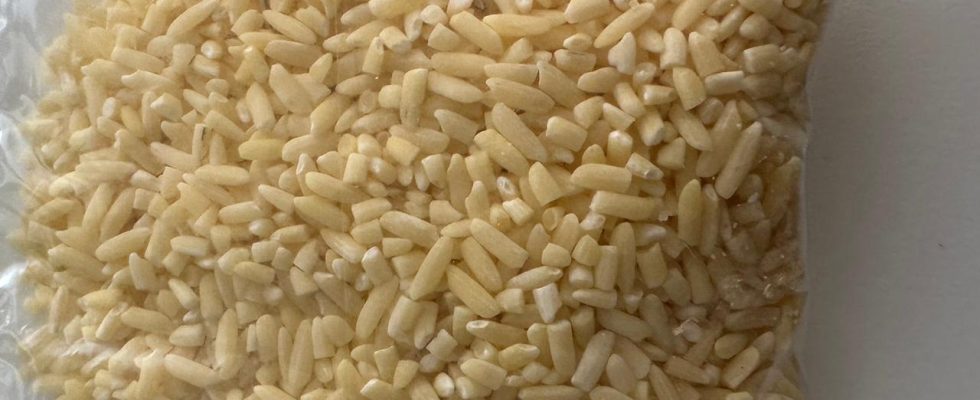Genetically modified rice is said to remedy a vitamin A deficiency that affects one in seven children in the Philippines. But the effectiveness and environmental impact of “Golden Rice” are controversial.
Lush green, full fields, healthy Filipinos – the first harvest of “Golden Rice”. The promotional video from last year promises hope. The genetically modified rice is said to provide beta-carotene, which is converted into vitamin A in the body and is important for vision and the immune system.
But because it is genetically modified, farmers are fighting back. This includes Lauro Diego. He has been an organic rice farmer and breeder for decades and runs fields in Nueva Ecija, a province about a three-hour drive north of Manila, the country’s rice heartland.
“If I planted the ‘Golden Rice’ in my fields, it might affect my organic crops, since I also grow rice.” In addition, some studies have shown that rice does not contain that much beta carotene.
Too low concentration?
Beta-carotene is an active ingredient that is lacking when people eat a limited diet, as is the case with many Filipinos from economically disadvantaged families. In addition, you have to eat a lot of it, says Lauro Diego.
“To get the necessary amount of vitamin A, you need to eat 10 to 15 cups of ‘Golden Rice’.” Studies by GMWatch would prove that. This is an organization that is critical of genetically modified food.
Influence on the environment unclear
Alfie Pulumbarit represents the association of farmers, MASIPAG. The group has sued against the commercial distribution of ‘Golden Rice’ because, in their view, there is still too little research into how cultivation affects the environment.
She also questions the benefit: “If the ‘Golden Rice’ is stored and cooked, the proportion of beta-carotene drops so that in the end it is really negligible.” In order for the rice to be digestible, it must also be eaten with oil or butter. And significantly more area is required for production than for normal rice.
“There are purely economic interests behind it, because only industry owns the grains of rice,” is therefore clear to farmer Diego. The industry is currently passing them on for free, but that could change. “And we don’t need the rice for the vitamin A intake, we could just eat carrots or other vegetables.”
rice spent in the south
So far, the government has only distributed the rice to children, pregnant and breastfeeding women from poor families in the south of the Philippines.
“Golden Rice” is a simple solution for the government, agrees Pulumbarit from the farmers’ association MASIPAG: “There is a lack of political will to really change anything in the agricultural situation.” The “Golden Rice” is a simple way to fight hunger and malnutrition – easier than tackling the underlying problem of why farmers in the Philippines are struggling to produce food.
A farmer plants rice seedlings in a field in the Philippines.
chance for children?
The project was promoted by the International Rice Research Institute IRRI. Nobody from there wants to comment because of the ongoing court proceedings. Glenn Gregorio has worked for IRRI for a long time and is now Director of the Southeast Asian Center for Higher Agricultural Studies and Research (SEARCA).
He sees in the “Golden Rice” a chance, especially for children. “If you get this vitamin A, your situation improves. You can see better and therefore read better.” That is the only way to escape poverty. “That’s why we think vitamin A is very important.”
Since Filipinos eat rice morning, noon, evening and sometimes even in between, the enriched, genetically modified variant is a very simple vehicle, even if it is not yet perfect, says the scientist.
rice should further developed become
“What I’m saying is that this is just the first model. Like the iPhone, there were problems at the beginning and now we’re already at version 15.” The worst that could happen is that nothing improves. He rejects the argument that Filipinos could eat more vegetables. A lot of people don’t have the money for that.
On the one hand, Glenn Gregorio would like his compatriots to be more open to the “Golden Rice”. On the other hand, he also sees the dangers. “Once the ‘Golden Rice’ is there, it will be a gateway for other genetically modified products to come to the Philippines.”
After the judgment of the Supreme Court in April, it is now the manufacturer’s turn. Among other things, it should demonstrate environmental compatibility. It is still unclear who is liable for any damage that may occur.

